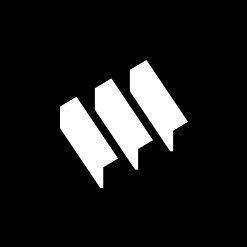What is Chainlink Used For?

What is Chainlink Used For in Blockchain Technology
The fast-paced, ever-evolving landscape of blockchain technology often introduces new terminologies and concepts that promise to revolutionize industries. One such concept that has gained significant attention and application is Chainlink. Ever wondered how smart contracts on the blockchain can reliably access external data? This is where Chainlink comes into play, bridging the gap between blockchain systems and the external world.
Understanding Chainlink: The Core Concepts
In the world of blockchain, smart contracts are what drive automation and decentralization. However, these smart contracts need accurate and reliable real-world data to function correctly. Oracles, as they are called, act as an intermediary that fetches and verifies external data and feeds it into the blockchain. Chainlink, essentially, is a decentralized oracle network designed to connect smart contracts with real-world data, events, and traditional bank payments securely and reliably.
Chainlink's innovation lies in its approach to solving the 'oracle problem' that has plagued blockchain systems for years. Traditional oracles are centralized and pose a single point of failure, potentially compromising the accuracy and security of the data they provide. Chainlink decentralizes this process by allowing multiple oracles to verify data independently, thus maintaining the integrity and trustworthiness of smart contracts.
The Role of Chainlink: Empowering Blockchain Ecosystems
Real-World Data Access
Chainlink’s primary purpose is to provide smart contracts with access to real-world data in a secure and efficient manner. For example, to execute a financial smart contract, you might need access to price information for cryptocurrencies or other financial instruments. Chainlink fetches this information from multiple data providers, ensuring the data is accurate, timely, and tamper-proof.
Enhancing Smart Contracts
Chainlink extends the capability of Ethereum and other similar blockchains by allowing smart contracts to interact with off-chain resources. This interaction is vital for creating dynamic, feature-rich decentralized applications (dApps) that require inputs like weather data for insurance contracts or external banking information for DeFi applications.
Decentralized Finance (DeFi)
One of the most significant applications of Chainlink is in the DeFi space. DeFi platforms rely heavily on accurate price feeds to function correctly, and Chainlink provides decentralized price oracles that are critical for the operation of decentralized exchanges, lending platforms, and synthetic assets. By preventing single points of failure, Chainlink ensures that these platforms can operate smoothly and securely.
Insurance and Beyond
Beyond financial services, Chainlink is also used in developing decentralized insurance products that require data on real-world events, such as weather conditions or flight delays. Smart contracts can use Chainlink’s decentralized oracles to automatically trigger claims processing and settlement, thus reducing operational costs and increasing transparency.
Cross-Chain Connectivity
Chainlink is also pioneering in connecting various blockchain networks, allowing for data and information to flow between different chains seamlessly. This cross-chain functionality is crucial as more businesses look to integrate multiple blockchain systems for more robust and comprehensive solutions.
The Future of Chainlink in the Crypto World
Chainlink continues to push the envelope in the world of blockchain technology. As the digital economy expands, the need for reliable, scalable, and secure data interchange will only grow. Chainlink’s robust and innovative approach positions it to be a cornerstone in this new technological era.
The potential applications of Chainlink in decentralized finance, cloud applications, supply chain management, and more offer a glimpse into a future where blockchain can interact with the real world in a more integrated manner. This advancement could lead to the increased adoption of blockchain technology in various sectors, ultimately leading to a more decentralized, efficient, and transparent future.
Why Choose Chainlink?
Chainlink not only enhances the functionality of smart contracts but also ensures security and reliability—two critical elements for any blockchain application. Here’s why Chainlink remains a top choice:
- Security: By using multiple independent sources to fetch data, Chainlink provides a secure way to anchor reliable data onto the blockchain.
- Flexibility: Chainlink’s decentralized network can be used to access off-chain data and integrate it with any blockchain, offering immense flexibility.
- Community Trust: As a respected platform, Chainlink boasts partnerships with leading companies in and outside of the crypto space, which further cements its adoption and reliability.
When navigating the intricate world of cryptocurrency and smart contracts, it is essential to have systems like Chainlink that you can rely on for accurate, real-time data. Whether you're a developer looking to enhance your dApp or an investor keen on exploring innovative projects, understanding the function and potential of Chainlink in the financial ecosystem is indispensable.
As we continue to witness massive acceleration in technological adoption, the pressing question isn’t if Chainlink and similar architectures are needed, but how soon their broad integration across industries will become the norm. Blockchain without such oracle systems is like a web without the Internet—a powerful concept, but one lacking the vital connections that make it useful and revolutionary. Welcome to the future, where Chainlink plays a pivotal role in making blockchain a part of everyday life.
Want to get cryptocurrency instantly?
Latest articles
See more






















